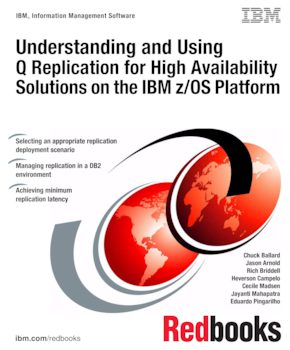Abstract
With ever-increasing workloads on production systems from transaction, batch, online query and reporting applications, the challenges of high availability and workload balancing are more important than ever.
This IBM® Redbooks® publication provides descriptions and scenarios for high availability solutions using the Q Replication technology of the IBM InfoSphere® Data Replication product on the IBM z/OS® platform. Also included are key considerations for designing, implementing, and managing solutions for the typical business scenarios that rely on Q Replication for their high availability solution.
This publication also includes sections on latency analysis, managing Q Replication in the IBM DB2® for z/OS environment, and recovery procedures. These are topics of particular interest to clients who implement the Q Replication solution on the z/OS platform.
Q Replication is a high-volume, low-latency replication solution that uses IBM WebSphere® MQ message queues to replicate transactions between source and target databases or subsystems. A major business benefit of the low latency and high throughput solution is timely availability of the data where the data is needed.
High availability solutions are implemented to minimize the impact of planned and unplanned disruptions of service to the applications. Disruption of service can be caused by software maintenance and upgrades or by software and hardware outages. As applications' high availability requirements evolve towards continuous availability, that is availability of the data 24 hours a day and 7 days a week, so does the Q Replication solution, to meet these challenges.
If you are interested in the Q Replication solution and how it can be used to implement some of the high availability requirements of your business scenarios, this book is for you.
Table of Contents
Chapter 1. High Availability scenarios
Chapter 2. IIDR Q Replication overview
Chapter 3. The two-node scenario
Chapter 4. The advanced two-node scenario
Chapter 5. The three-node scenarios
Chapter 6. Latency analysis
Chapter 7. Managing Q Replication in the DB2 for z/OS Environment
Chapter 8. Recovery procedures
Appendix A. Using ASNCLP on z/OS
Appendix B. Additional material
